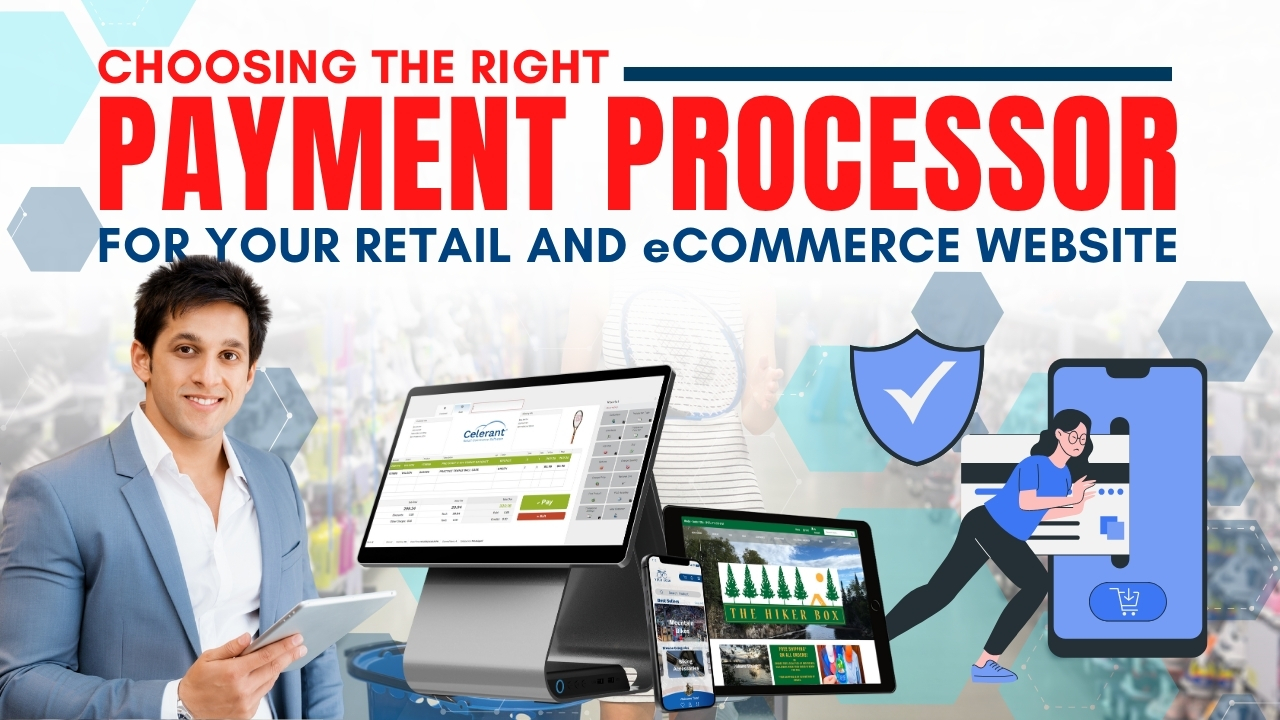Blog
Personalize Your Retail POS Reports for Sales Insights You Can Actually Use
May 24, 2024 / 9 minute read / By Zoya Naeem
 2024
2024Blog
 2024
2024Ever feel overwhelmed by stacks of endless reports from your POS system?
You are not alone.
Retail analytics are rich in information, but sometimes, it’s hard to find what you really need, or how to make sense of it to determine your next steps. That’s where personalized reports come in. They are like a clear window into your sales data, showing you exactly what’s working and what’s not.
Personalized POS reports help you avoid information overload and focus on insights that are actually detrimental to your business.
In this article, we talk about it and more. We’ll walk you through:
So, let’s start with the basics.
In today’s competitive retail landscape, having a clear view of your entire business is crucial for making informed decisions and achieving success. This is where a unified retail back-office system steps in. It’s like a central hub that gathers all your business data into one place, both online and in-store.
With a unified retail system, you can easily collect each customer’s shopping patterns and purchase history across different channels, unifying customer data by unique identifiers (typically email addresses). This makes it easier to personalize your marketing efforts, tailor promos, and improve overall customer experience based on comprehensive insights.
A unified retail system also allows you to access real-time inventory data from multiple platforms and stores. You can track which of your products are selling fast and where, which allows you to track and monitor trends, allocate products appropriately, and make better data-driven decisions. This ensures you are neither understocked nor overstocked, optimizing your inventory for maximum efficiency and profitability.
Some of the key functionalities of a unified retail back office system include:
When buying a POS system, look for one that lets you customize your POS reports, based on any metric you need, on the fly. This way, you can create reports that answer your questions and fuel smarter decisions across your team. Your sales data can become a powerful roadmap to success with the right tools.
A unified retail system gives you a holistic understanding of your business. This centralized approach builds the foundation for tapping into actionable insights to fuel your success.
When making data-driven decisions for your retail business, generic POS reports can be overwhelming and filled with information that doesn’t necessarily translate into clear, actionable insights.
Customizable reports, based specifically on your business, can reveal patterns and trends that generic reports might miss. Here are some of the common types of POS reports you can generate using the data from your POS system:
| Customer Reports | Inventory Reports | Merchandise Sold Reports | Employee Reports |
|---|---|---|---|
| Customer Mailing List | On hand Units by Brand | Departmental Sales | Employee Sales History |
| Customer Purchase Detail | On hand Units by Department | Discount Sales | Employee Type Sales History |
| Customer Purchase History | Departmental Sales vs. OH Retail | Merchandise Sold | Employee Activity Report |
| Customer Reward Program | Inventory Detail | Sales Tax Report | Clock in/out Report |
| Customer Sales by Brand | Inventory History Report | Sales s. Returns | Shift Performance Report |
Consider an all-in-one POS system like Celerant that connects your sales data across different channels for even richer insights. This means your in-store sales, mobile app purchases, online orders, and even email marketing campaigns can all be analyzed together.
This allows you to create a more comprehensive report, revealing rich customer insights. You can personalize your marketing campaigns based on your customer’s buying habits or tailor promotions to specific customer segments.
Personalized reports can help you transform your sales data from a confusing puzzle into a clear roadmap to success. Here are four things you want to keep in mind before customizing your POS reports:
Before diving deep into data, take a moment to map out your business goals. What are you trying to achieve? Here are some common objectives:
Your goals will guide you in filtering the information you need from your reports.
For instance, if your objective is to increase revenue, you might want to focus on insights related to sales figures and trends. If improving profitability is your aim, you should examine gross profit margins and cost of goods sold (COGS).
By clearly defining your goals, you ensure your POS reports are customized to provide the data necessary to boost your bottom line.
Understanding your customers is important for creating reports that reveal meaningful insights. Who are you trying to sell? You want to consider factors such as demographics, your customers’ buying habits, and preferred products.
Knowing your targeted audience better allows you to tailor your reports to understand buying trends and preferences, helping you make informed decisions about inventory levels, marketing strategies, and promotional campaigns.
For instance, if a bigger portion of your customer base prefers a specific product line, your reports should reflect sales data for that product line to help you stock appropriately and plan targeted campaigns.
Your POS system may offer a wealth of data, but not all is relevant to your business goals.
Selecting data points relevant to your business objectives and customer insights is important. Depending on your POS system, you can choose different data types to tune your POS reports, including sales, gross profit margins, COGS, product details, etc.
For example, if you want to monitor the success of your new product line, you will want to focus on sales figures and customer insights related to that product line. By aligning your data points with your goals and customer insights, you can customize your POS reports to provide the information you really need.
Many modern POS systems come with powerful report customization features that take personalization to the next level.
For instance, you can drill down with attribute level to see sales figures by product color, size, style or brand and department. Depending on your POS system, you can also apply data filters that exclude specific data sets so you only see products that match the selected criteria.
You can even turn numbers into charts or graphs for a clear and easy-to-understand visual representation of your data.
Most POS systems offer a range of resources to help you get the most out of your reports. You might ask your POS provider if they have specific training materials or guides to help you create customized reports.
These resources can provide valuable step-by-step instructions and helpful tips, saving you time and frustration as you unlock the power of personalized sales insights.
Most POS systems will offer customizable dashboard reports upon login. These are like mini versions of the full-fledged traditional reports, offering a quick overview of the key sales metrics on your back office homepage or a dedicated dashboard screen.
Typically, you can customize which data points you want to include so each time you login to your POS system’s back office software, you’ll see a quick snapshot of visual reports to get an instant pulse on your business. Here are some common data points that are often displayed in quick dashboard reports:
By leveraging quick dashboard reports, retailers can gain a valuable edge in today’s competitive market.
When choosing a POS system, prioritize one that offers customizable quick dashboard reports, like Stratus Enterprise for advanced retail or Cumulus Retail for small business. These reports allow you to see the most important metrics for your business at a glance.
This could be your daily or weekly sales figures, top customers, or departmental-level inventory data. With customizable dashboards, you get the information you need to make quick and informed decisions, all on a single screen.
Many POS systems offer report customization features. The key is to find the one that best aligns with your business needs.
When making your choice, prioritize the one that offers powerful report customization features. This empowers you to process raw data into targeted insights that drive real results.
At Celerant, our powerful POS system comes with customization features, allowing you to tailor your POS reports to meet your needs and provide insights necessary to improve your bottom line.
Ready to see how it works? Click the button below to discover how our all-in-one POS and back office system can transform your retail operations.
 The eCommerce landscape is a race, which means protecting shipments with insurance is not just smart,… |
 Discover how to choose a payment processor that fits your retail needs and is built to grow with your… |